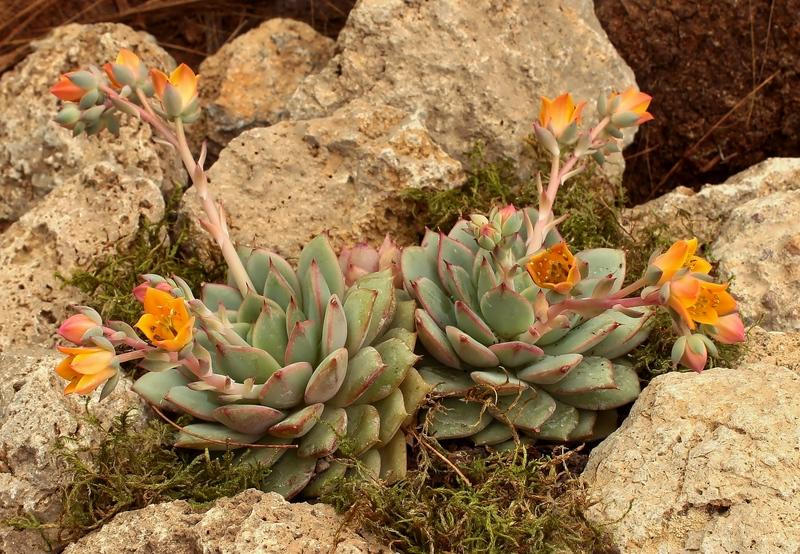You are not logged in.
- Topics: Active | Unanswered
#1 Re: Identificatie » Cyrtanthus spiralis » 2015-09-14 11:33:53
Hi,
but, what is with your plant? Has it flowered?
#2 Re: Identifizierung » Crassulaceae Magdeburg 6 » 2015-09-13 10:06:30
Hi Tom,
yes, I think you´re right. Thank you very much.
#3 Re: Identificatie » Cyrtanthus spiralis » 2015-09-13 10:05:04
Tztztz,
again no Crassulaceae...... Paul, are you becoming disloyal to the ICN ;-) ;-)
There are more Cyrtanthus spec. with corkscrew-leaves. We have to wait for the flowers.
#4 Identifizierung » Crassulaceae Magdeburg 6 » 2015-09-10 19:38:45
- unsane
- Replies: 2
Hallo,
eine nicht identifiziert Crassula hab ich hier zu bieten. Sie steht schon jahrelang namenlos in der Magdeburger Sukkulenten-Sammlung. Leider wird sie etwas zu warm kultiviert, der Wuchs ist also nicht ganz typisch. Die Blütenmerkmale hab ich aber versucht so gut wie möglich zu fotografieren.

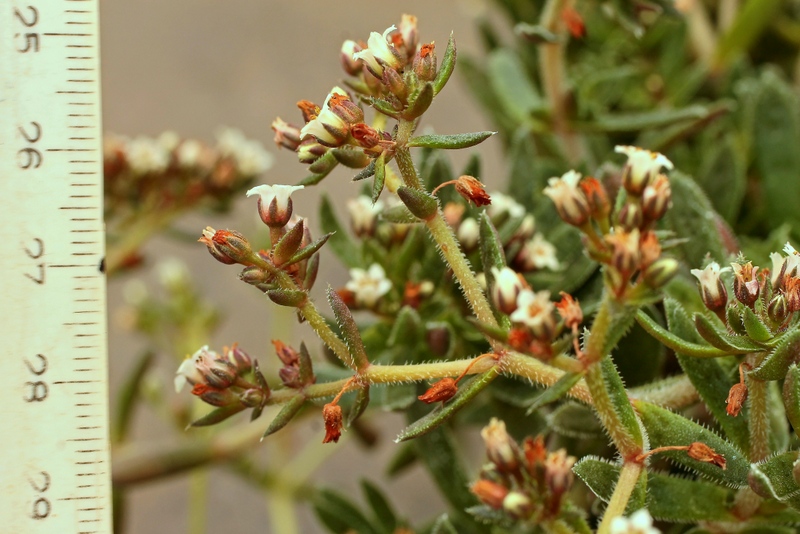
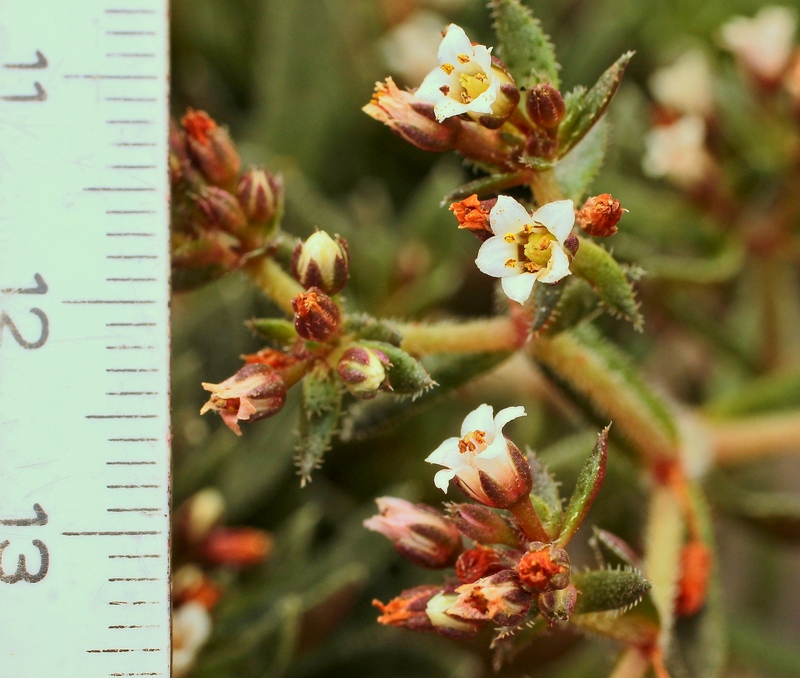
#5 Re: Identification » Sedum mocinianum, confirmation ? » 2015-09-10 18:51:05
Hi,
when I compare the descriptions respectively the table of the characteristics, I can´t find any sign, that the plant of tephro49 is the new S. piaxtlaense. OK, the leaves could vary in culture, but not from amply (!) rhomboid and concave (!) to the oblong, terete leaves of tephros plant that are typical for S. mocinianum. The normal shape should still be recognizable.
And I mean that the petals are not typical. When you read in the description of the new species they should be 8,5 to 9,5 mm long and 1 to 2 mm wide. So we than have a ratio of 6:1 in S. piaxtlaense and ca. 1,7:1 in S. mocinianum (5 mm long and 3 mm wide). When you look at the photo I can´t see a ratio like this. The petals are very broad in ratio to their length.
#6 Re: Nieuwtjes » Ook naamloos » 2015-09-10 18:17:42
Hi Paul,
you lucky guy! I love this genus but it is not a Crassulaceae, it´s an Asparagaceae. The name of the plant is Eriospermum dregei.
Very interesting are the threads. These are not true leaves but epidermal outgrowths of the tiny leaf at the base of the plant. Nature is so fantastic and imaginative.
#7 Re: Nieuwtjes » Naamloos » 2015-09-10 18:12:28
Hi,
the first name that comes in my mind ist Echeveria ´Paul Bunyan´. But there are more of these "special" cultivars and I don´t know them all.
#8 Re: Identification » Crassula qqch??? ou Echeveria qqch ??? » 2015-08-22 12:44:28
Hi,
in my collection is a clone of Echeveria macdougalli that looks the same and I´m sure that this is this species.
#9 Re: News » Echeveria halbingeri (collection de Bob Grim). » 2015-08-22 12:38:01
Hi,
maybe both plants are Echeveria halbingeri. In the case of Echeveria setosa we can see how different a Echeveria-species at almost the same location can be. Here E. Walther has described an extreme Form as Echeveria ciliata. Even E. halbingeri could be that variable. For his first description Walther has only one (?) specimen from one collection of Halbinger without a definite locality. This says nothing about the diversity of a species in nature.
The colour and shape of the leaves and sepals and the length of the pedicels are, in my eyes, no good characteristics in the genus Echeveria. Look at the wild Populations of Echeveria carnicolor here on our site. Or all the different E. gibbiflora-Forms. These traits show only trends but are variable. The flowering time is very interesting but could depend on the place where the plants are cultivated. Maybe you should propagate your plant and send them to other collectors all over Europe/World to see if the flowering is everywhere the same.
E. halbingeri and E. pulidonis are the only Echeverias with petals that are distinctly recurved in a unique way at the tips. In my collection are two clones of Echeveria halbingeri. One from an succulent-nursery here in Germany and one from San Joaquin (near Puente Tepozan), Queretaro. The rosettes are a little bit different, but the flowers are nearly the same and the plants fit the description of Walther. At the old Forum I have made a comparison of my E. halbingeri and the first description and they are only slightly different.
A plant don´t know the manmade boundaries. The Distance between Actopan in Hidalgo and Puente Tepozan in Queretaro is only 100 km in the same Mountains. Obviously 2012 the species was also found in Veracruz (http://www.crassulaceae.com/botanik/pfl … 0670-2.pdf). So they are hopped over the Sierra Madre Oriental ;-). We all know how tiny Crassulaceae-Seed are......
So, what should we do? I think, that the Grim-Plant represents a clone of E. halbingeri different from the already known.
#10 Re: Identification » E. Pulvinata or harmsii? » 2015-08-22 11:12:06
Hi,
for me its Echeveria ´Pulv-Oliver´. E. pulvinata has not these long pedicels and so the inflorescence is more compact than in ´Pulv-Oliver´. Here the Inflorescence is fairly open.
#11 Re: Präsentation » Crassulaceae in Magdeburg » 2015-06-03 17:53:29
Sedum moranense
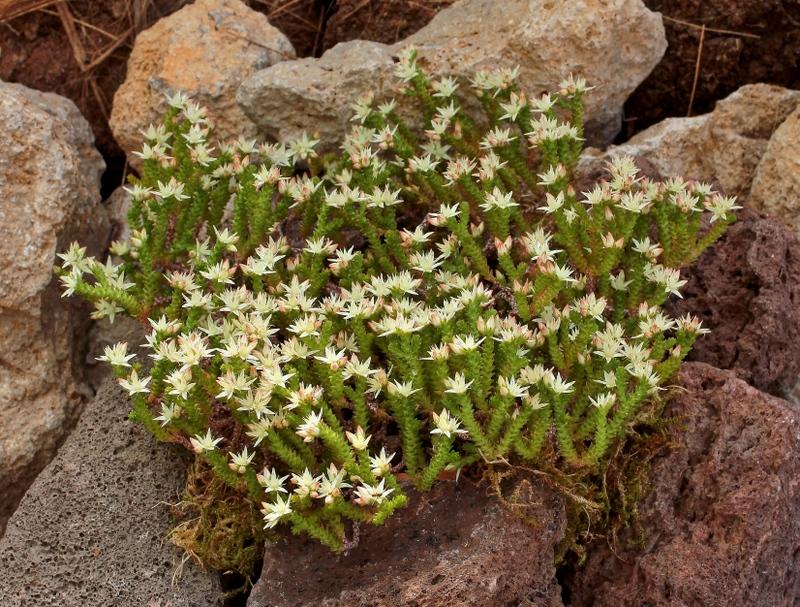
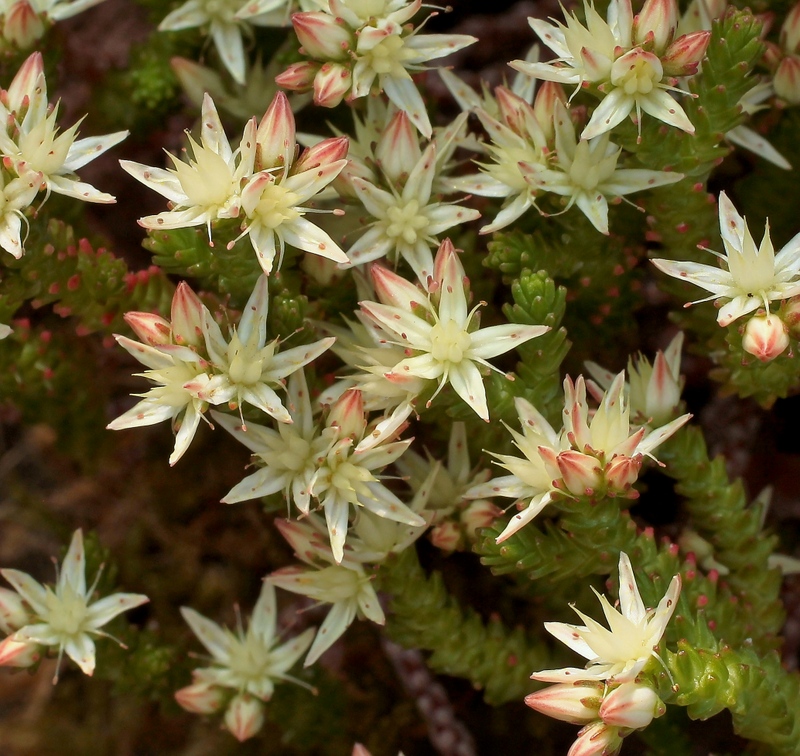
Diese Pflanze hatte Köhres 2009 als Echeveria spec. "Zamorano" in seiner Saatliste stehen. Alle Merkmale zeigen einen sehr schönen Echeveria secunda-Typ. Vor ein paar Jahren waren die Blüten nicht so intensiv gefärbt.......... ich bin so glücklich über meine neuen Gewächshäuser.

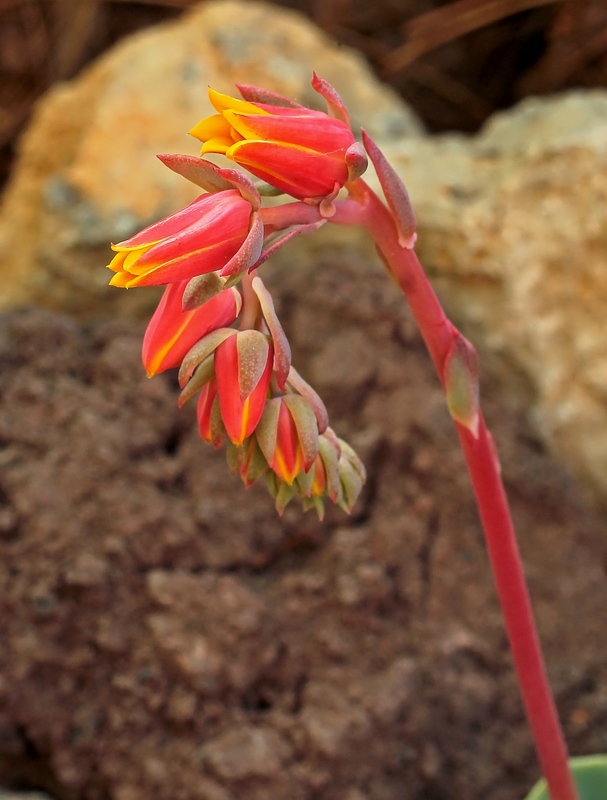
#12 Re: Identification » Differences between Ech Harmsii and Ech Set-Oliver? » 2015-05-29 17:58:34
Hi,
if you have a magnifying glass, than take a closer look at the hairs. In Echeveria harmsii, and related species, they are very short and consist at least of two cells. All plants that named harmsii with longer and multicellular hairs are no Echeveria harmsii.
#13 Re: Präsentation » Crassulaceae in Magdeburg » 2015-05-29 17:50:34
Ich sag nur: Urgl! ;-)).
Wir können wohl von einer gewissen Variabilität beider Taxa ausgehen. So belasse ich es erstmal bei dem Art-Epitheton.
#14 Re: Präsentation » Crassulaceae in Magdeburg » 2015-05-27 21:36:19
Na gut,
dann änder ich es nochmal ;-)) Sie machen es uns nicht einfach, unsere Lieblinge.
#15 Re: Präsentation » Crassulaceae in Magdeburg » 2015-05-26 13:54:27
Hi Tom,
a few days ago I also had some doubts about the name but stay with it. Now that you say this, I´m sure that I have no real P. compactum in my collection.
#16 Re: Präsentation » Crassulaceae in Magdeburg » 2015-05-25 17:07:32
Es blüht und blüht und blüht..........
Echeveria elegans, der Albicans-Typ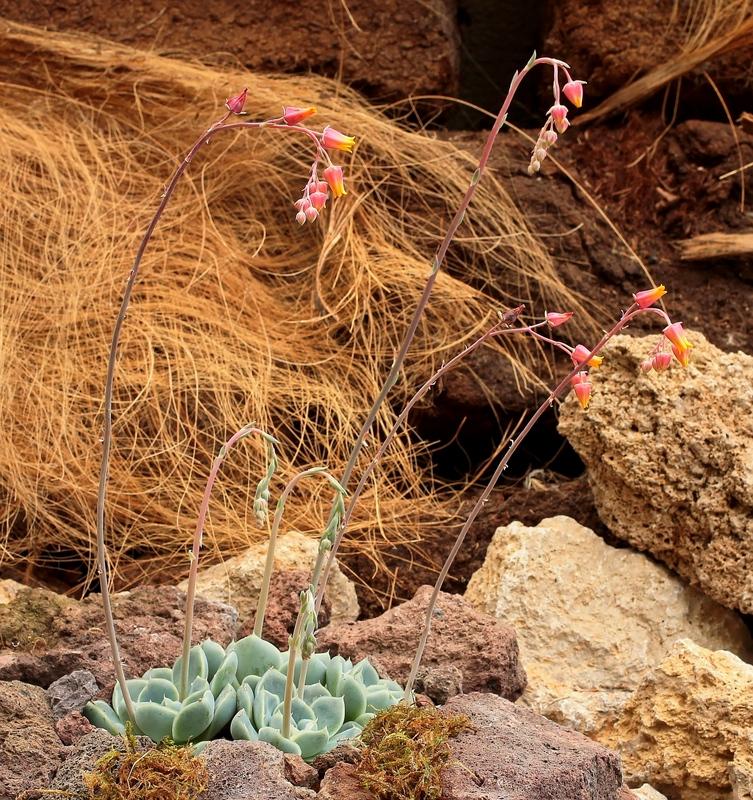
Pachyphytum compactum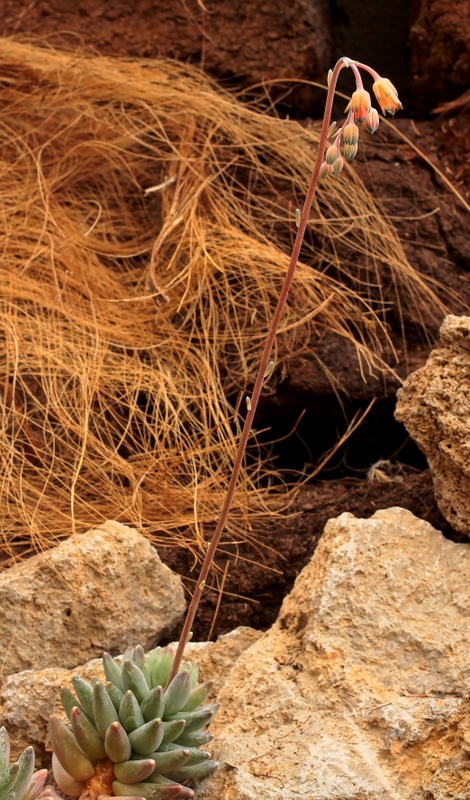
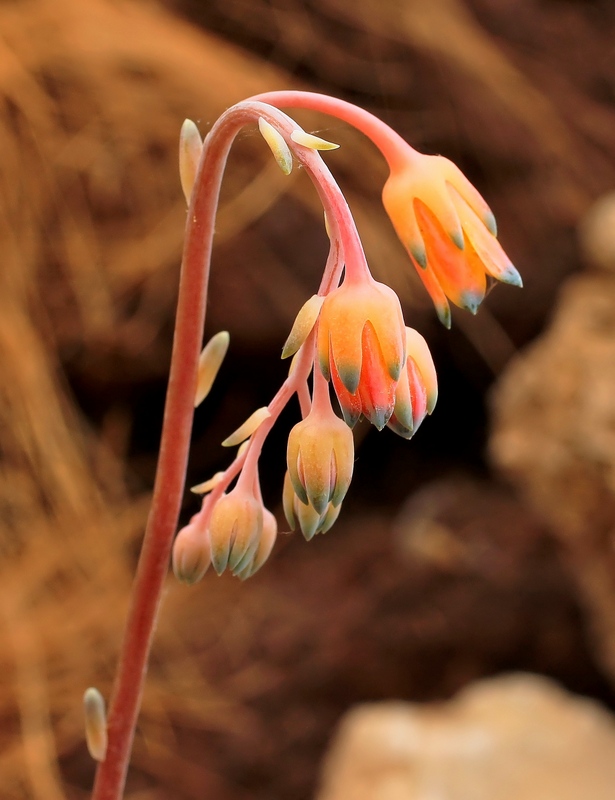
Sedum diffusum, der Potosinum-Typ.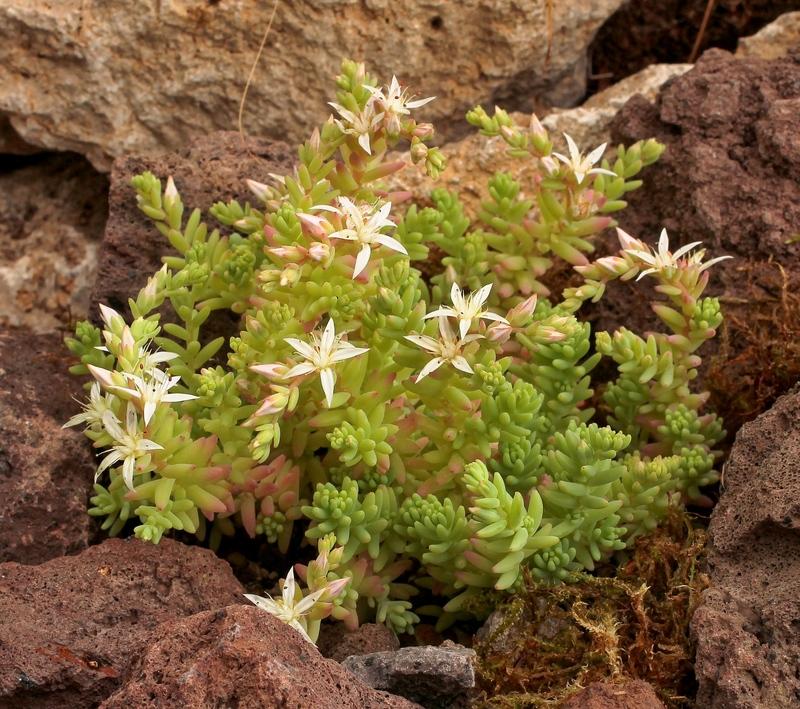
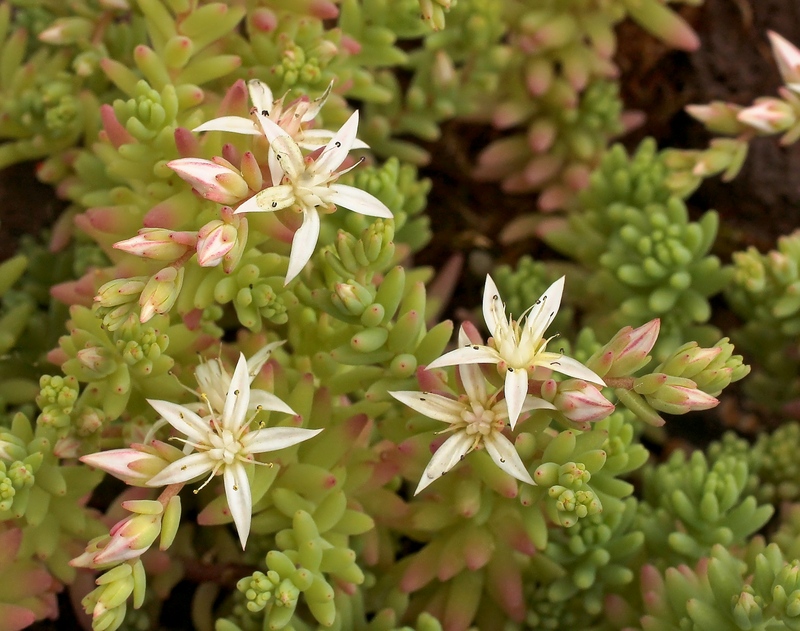
Echeveria compressicaulis, nicht ganz einfach zu fotografieren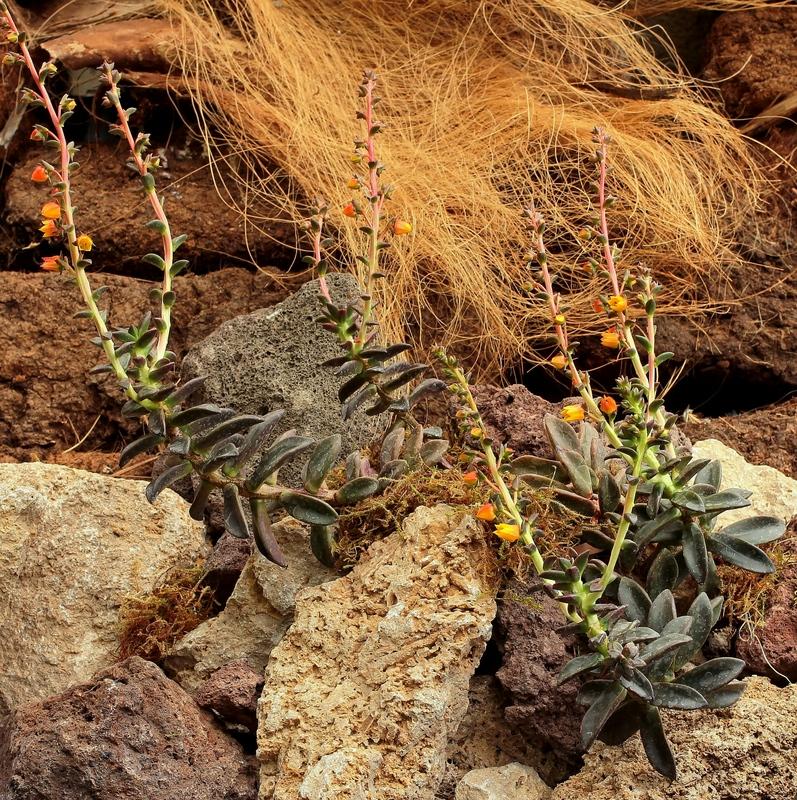
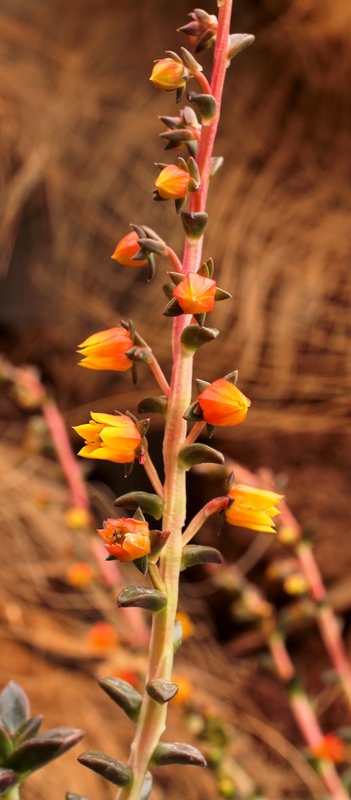
#17 Re: Nieuwtjes » Crassula id please » 2015-05-25 16:59:59
Hi,
it´s now in the genus Prometheum.
#18 Re: Präsentation » Crassulaceae in Magdeburg » 2015-05-11 20:28:24
Aber irgendwie schafft es der Uploader nicht, das neue Bild zu übernehmen. Wenn ich das Thumbnail vergrößer kommt auch wieder nur das schlechte zum Vorschein.
Edit: Vielen Dank, jetzt wird das bessere Foto doch gezeigt.
Es ist unglaublich, ich muss wohl noch eins machen, denn die Pflanze wird immer schöner.........
#19 Re: Präsentation » Crassulaceae in Magdeburg » 2015-05-11 20:19:26
Von dem Sedum mucizonia hab ich noch ein besseres Foto ohne Gegenlicht gemacht, kommt gleich.
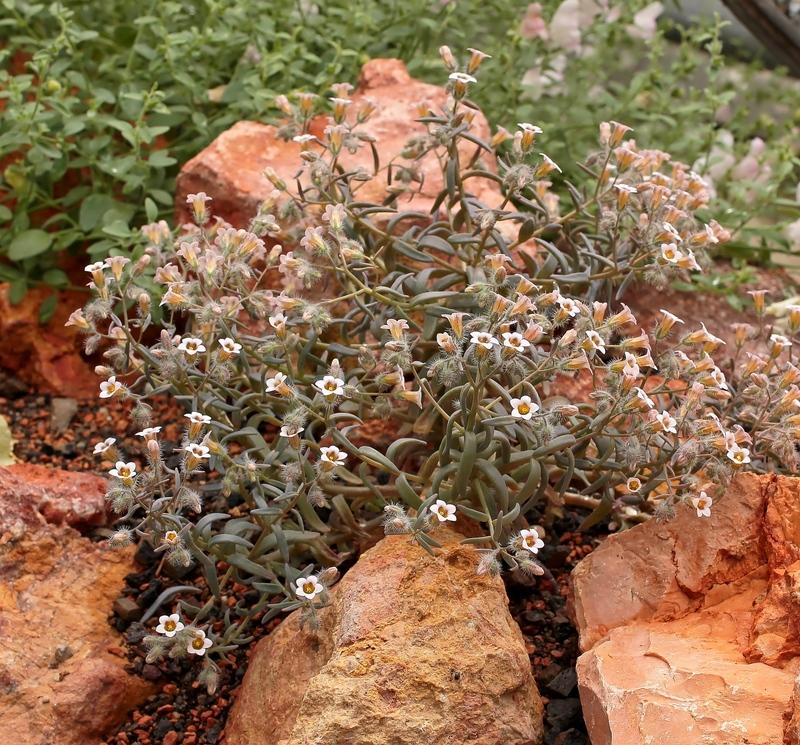
Aber es gibt noch mehr zu sehen:
X Graptoveria ´Fred Ives´ hat noch nie so schön geblüht.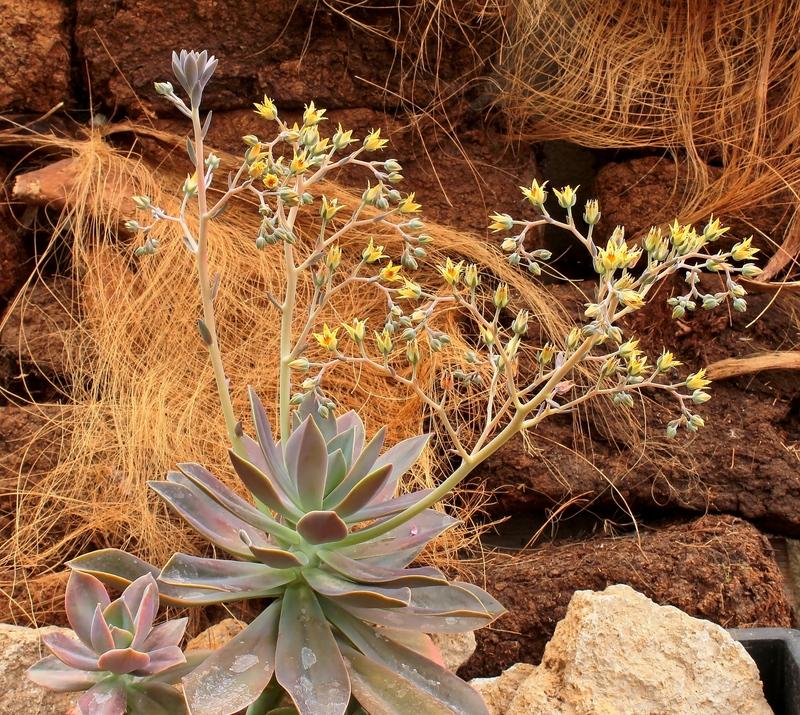

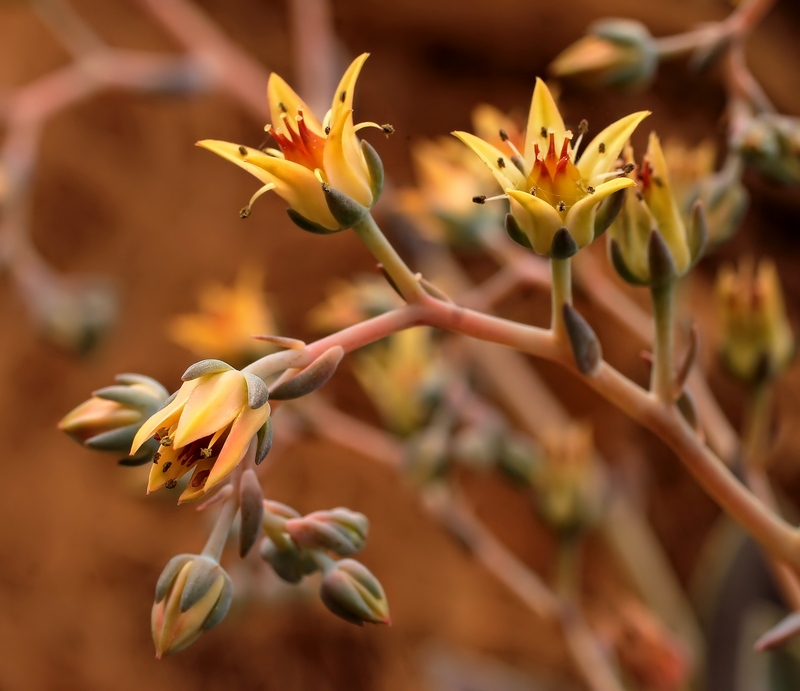
X Graptoveria ´Silver Star´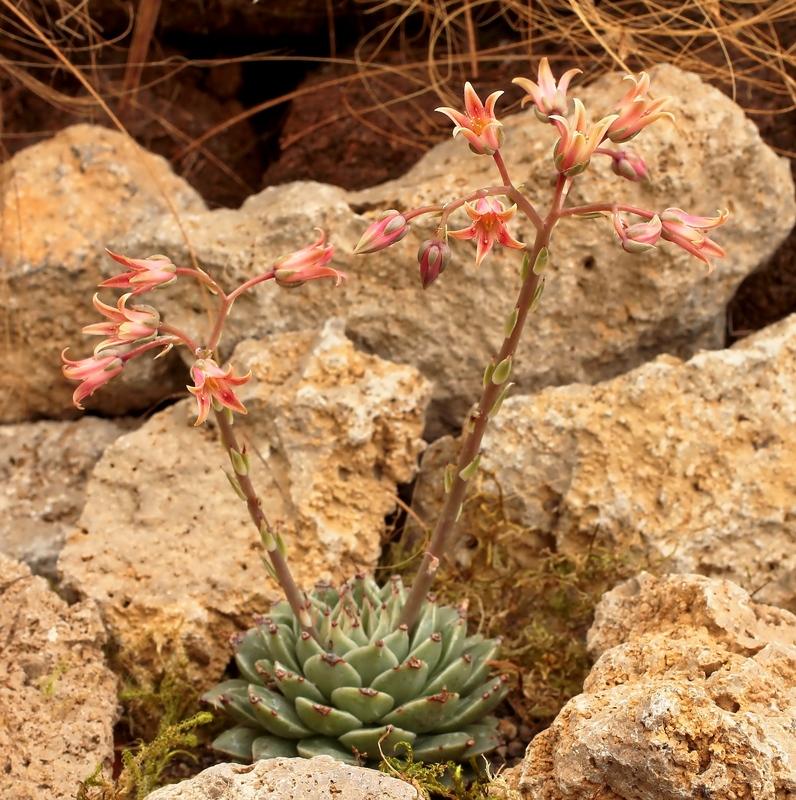
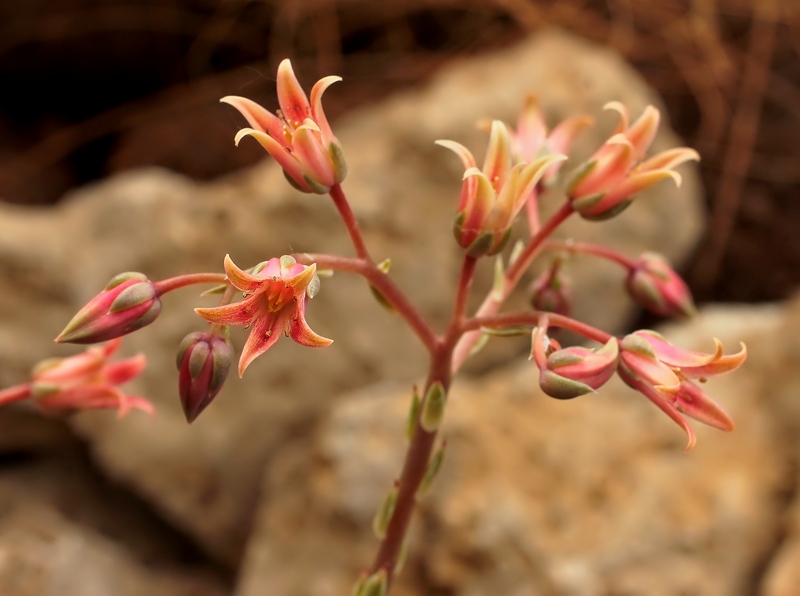
Sedum macdougallii, man scheint ja nicht allzu viele Fotos der Blüten dieser Art im Netz zu finden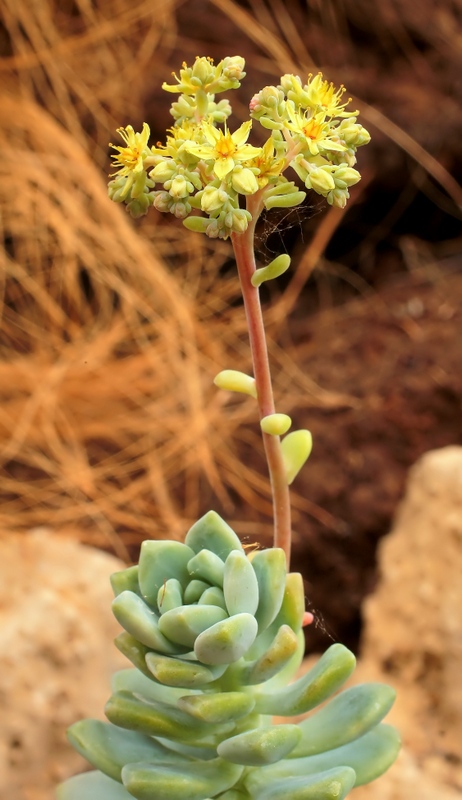
Zu guter Letzt Sedum mexicanum
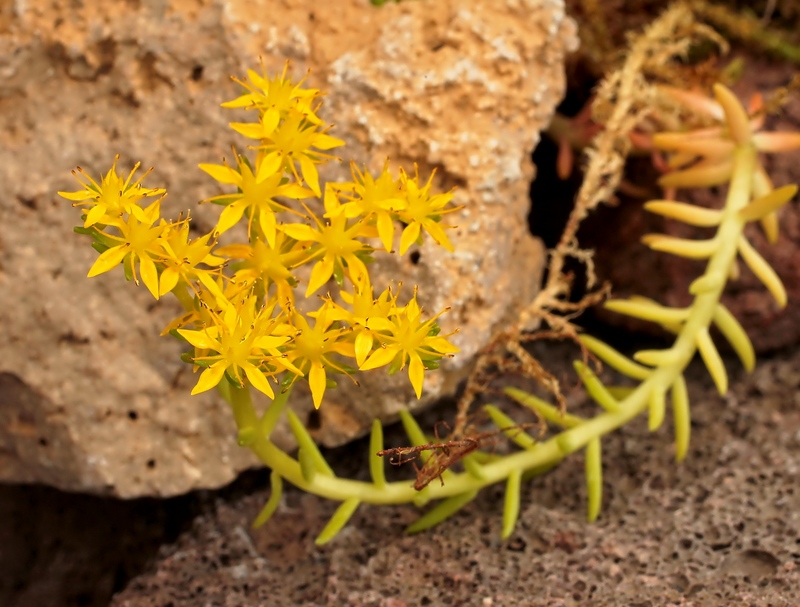
#20 Re: Präsentation » Crassulaceae in Magdeburg » 2015-05-06 22:39:34
Moin,
im März 2014 hab ich in Andalusien an verschiedenen Stellen die vertrockneten Überreste von einjährigen Sedum mit Samen gefunden. Immer in der Hoffnung, verschiedene Arten aufgesammelt zu haben, hab ich sie mitgenommen. Aus einer Portion ist das sehr häufige Sedum rubens geworden, was zu erwarten war. Auch aus der zweiten Aufsammlung erwuchsen Sämlinge, die im Laub Sedum rubens sehr ähnelten. Leider hab ich nicht richtig aufgepasst und viele Babys verloren. Mir waren sie jedoch nicht so wichtig, denn ich hielt sie ja für Sedum rubens. Den einzigen Verbliebenen habe ich dann im Schauhaus in mein Felsspalten-Beet gepflanzt und sollte es nicht bereuen.
Dieses Sedum ist nun vor ein paar Tagen aufgeblüht und ich habe mich sehr gefreut. Die lang behaarten Knospen ließen mich schon vorher gehörig an Sedum rubens zweifeln. Nach dem Aufblühen war es dann klar, wie erhofft hatte ich Sedum mucizonia gesammelt und die Pflanze hat sich super entwickelt. Jetzt darf sie sich auf jeden Fall ordentlich in den Spalten versamen.
Leider sind Fotos im Gegenlicht immer schwierig. 
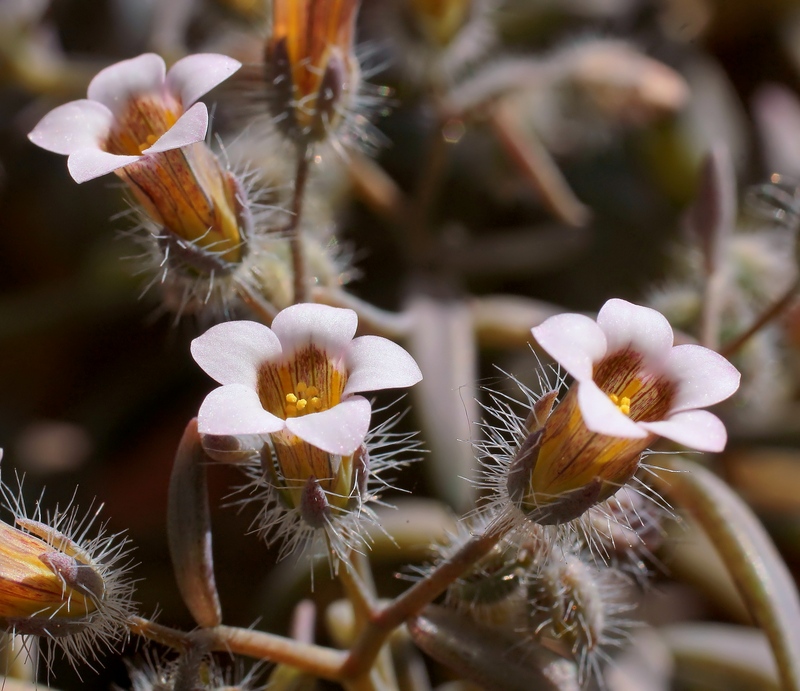
#21 Re: Identification » Id Echeveria » 2015-05-06 22:26:57
Bon soir,
it looks like Echeveria ´Alienor´.
#22 Re: Präsentation » Crassulaceae in Magdeburg » 2015-04-26 21:35:52
Im Schauhaus hat Aeonium sedifolium seinen Blüte-Höhepunkt erreicht. Ein wahrer Teppich an Blüten. Wenn man davor steht, ist es noch viel beeindruckender als auf dem Foto.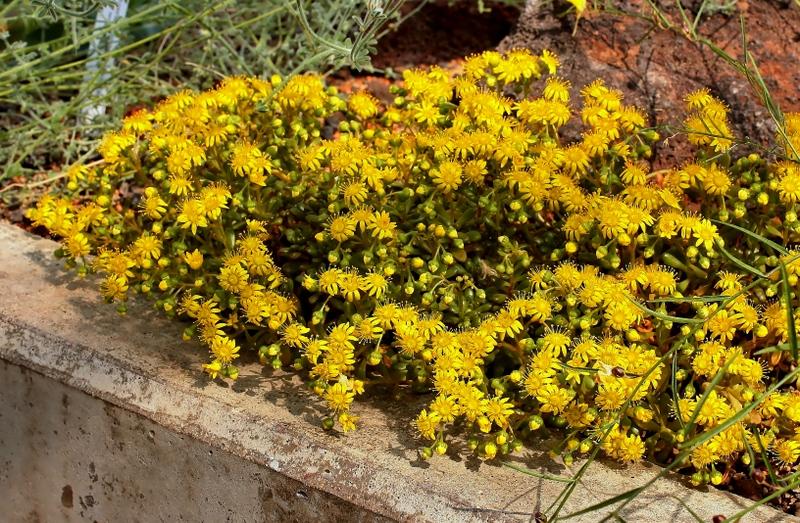
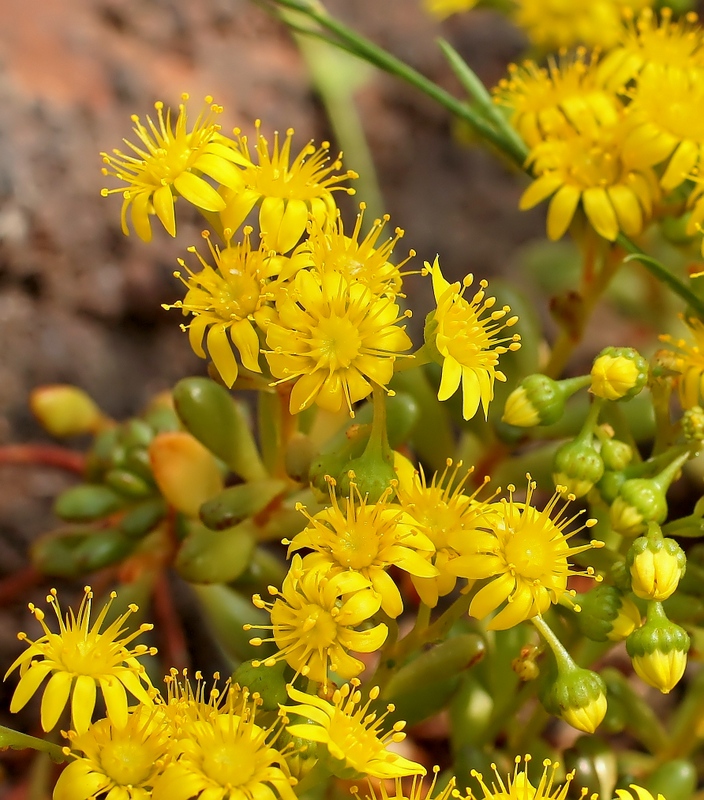
Monanthes minima ssp. adenoscepes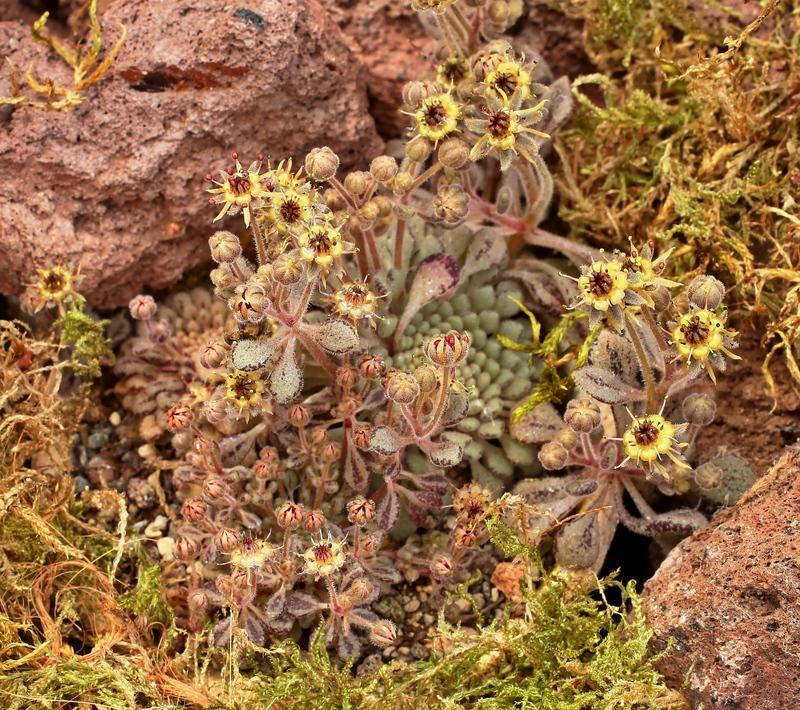
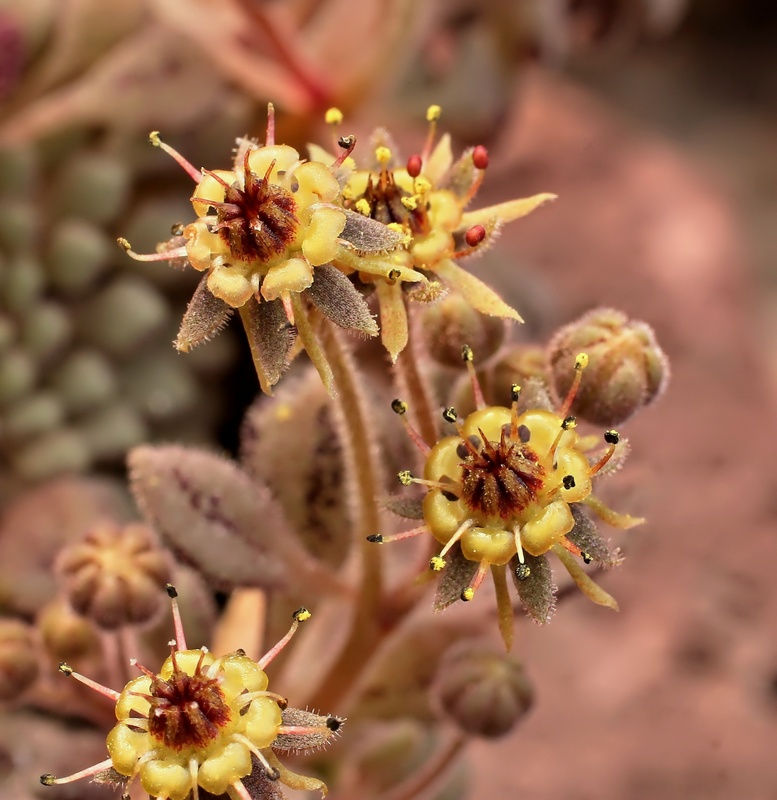
Monanthes brachycaulon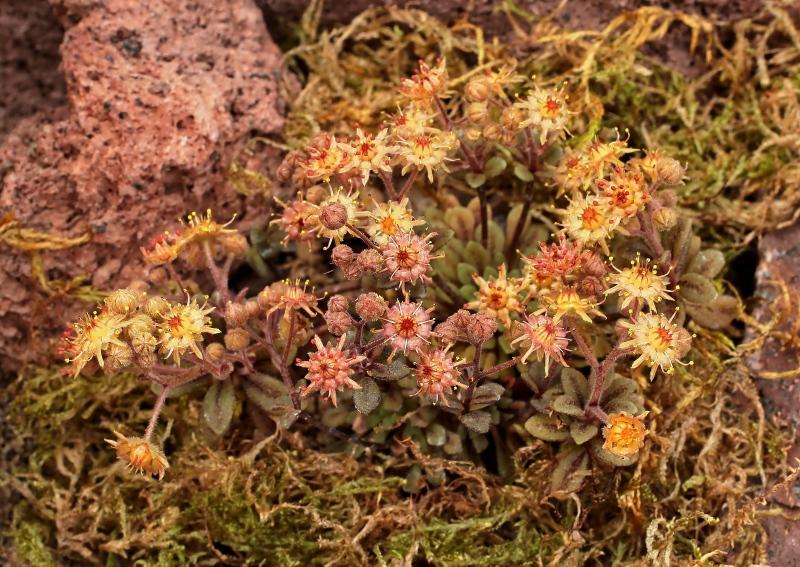
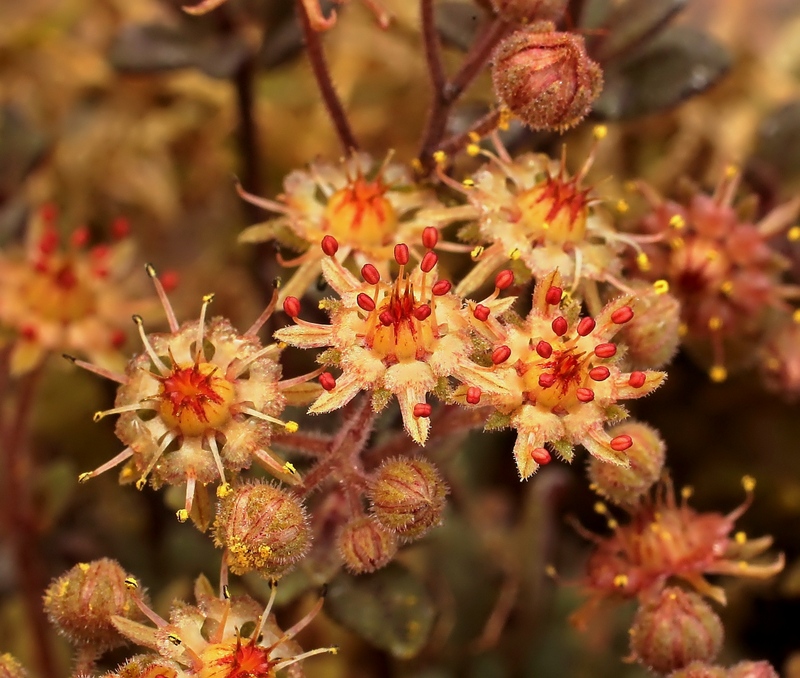
Eine wunderbare dunkellaubige Form von Monanthes pallens, die den Namen ad absurdum führt. Ein Naturfindling eines Kollegen von Teneriffa
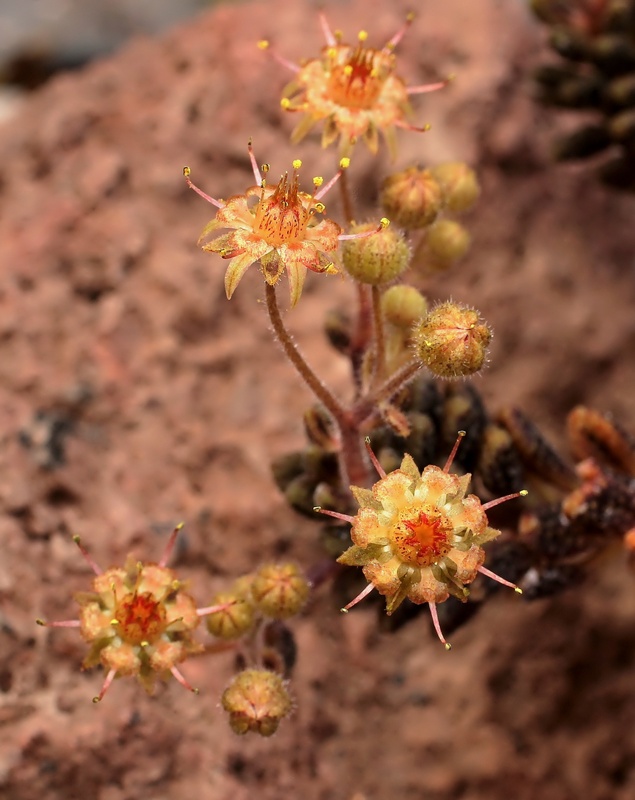
"Meine" rosettigen Monanthes kultiviere ich in kleinen Tontöpfen in recht mineralischem Substrat. Sie bleiben im Winter immer mäßig feucht, Staunässe wird aber vermieden. So bilden sie im Frühjahr eine wirklich beeindruckende Blattfärbung aus. Demnächst kommen sie aber doch wieder unter die Tische um Verbrennungen zu vermeiden.
Ein Sprung über den Atlantik: Echeveria bicolor U1921; El Delgadito, Merida, Venezuela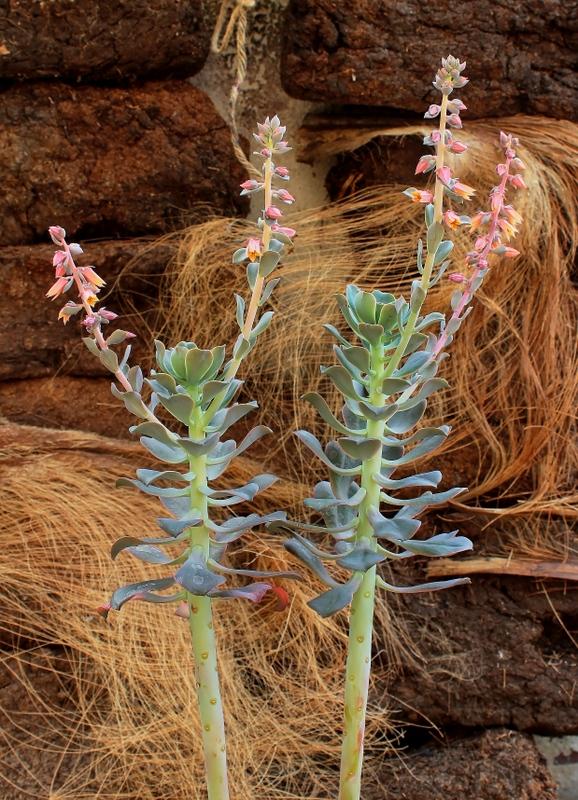
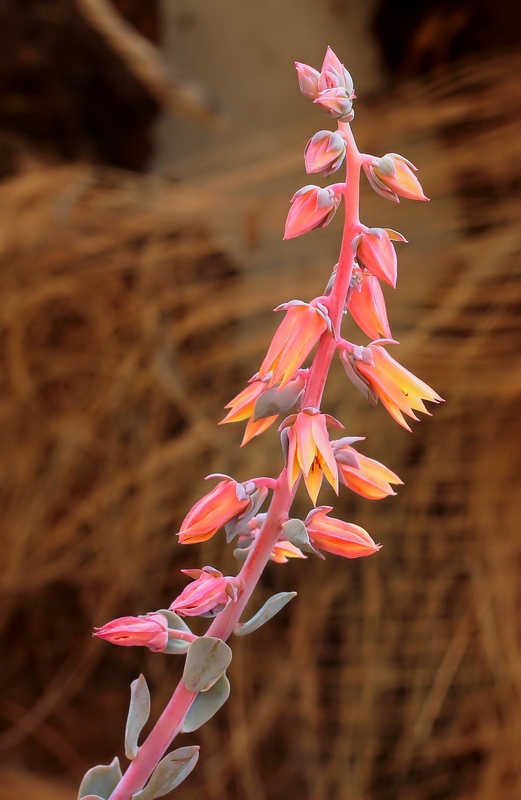
Echeveria lilacina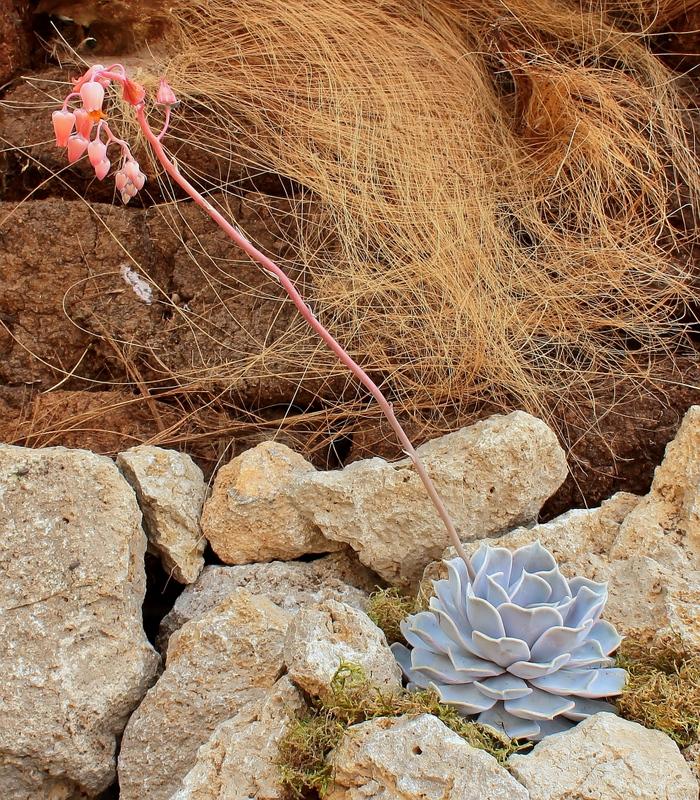
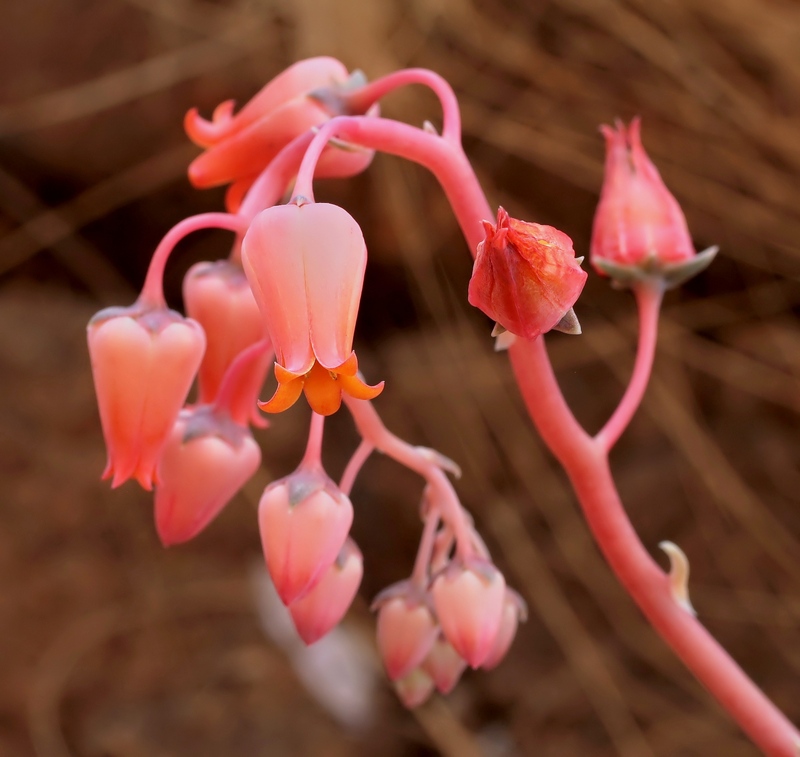
Echeveria prolifica
Zu guter Letzt meine Echeveria ´Laubfrosch´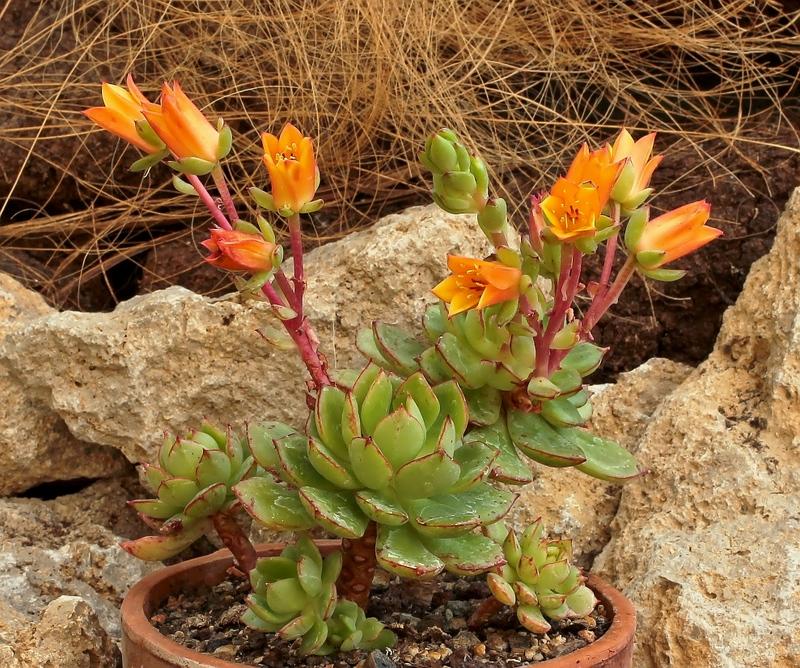
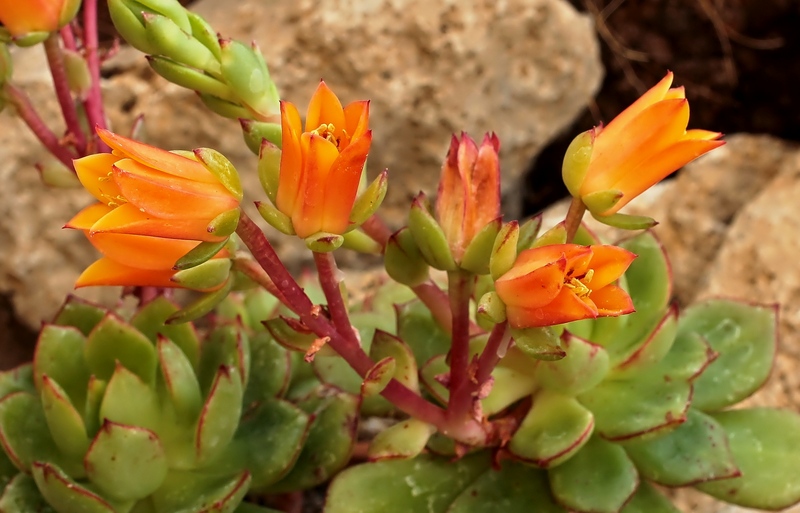
Bis zum nächsten Mal
#23 Re: Präsentation » Crassulaceae in Magdeburg » 2015-04-14 17:19:55
Moin,
ja, sehr sicher. Die Pflanze hab ich hier schon öfter vorgestellt (auch im alten Forum) und es gab eigentlich kaum Zweifel an der Zuordnung. Es wurde nur mal darüber nachgedacht, ob es nicht auch Sedum alexanderi sein könnte. Die Farbintensität der Blüten aller meiner Crassulaceae ist in der neuen Heimat aber deutlich gesteigert worden.
X Graptoveria ´Acaulis´ und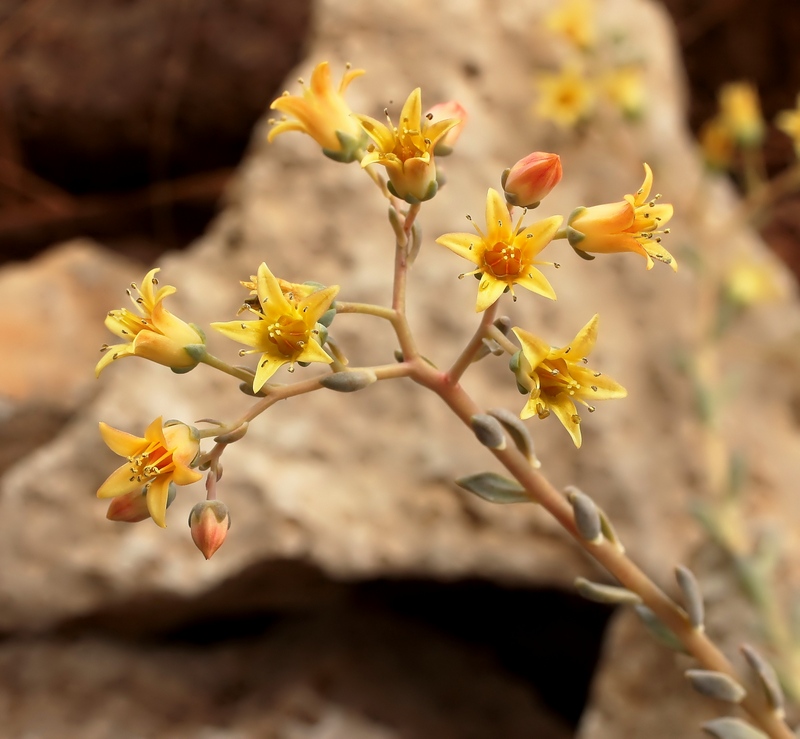
X Cremnosedum ´Whetstone´ geben sich die Ehre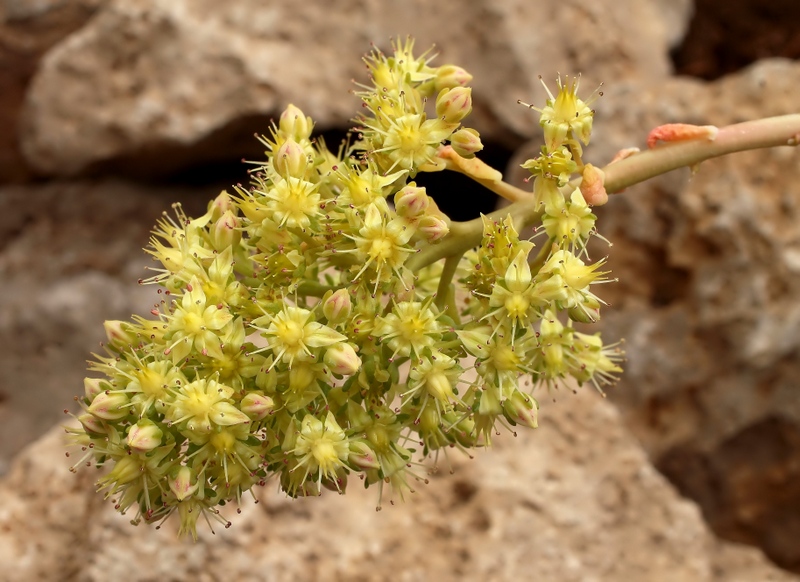
#24 Re: Präsentation » Crassulaceae in Magdeburg » 2015-04-12 21:23:48
Moin,
die Farbe des Sedum hab ich bei der Bearbeitung eigentlich ganz gut hinbekommen. Meine Farbwahrnehmung würde aber eher "cremeweiß" dazu sagen.
Es blühen weiterhin:
Echeveria ´Vanbreen´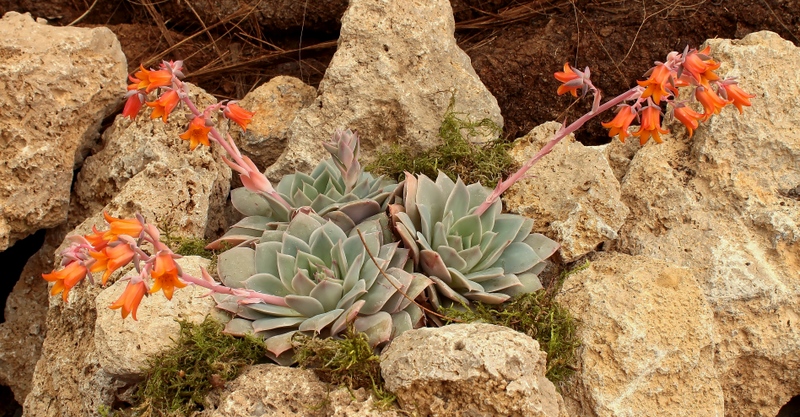

Echeveria ´Ghost Buster´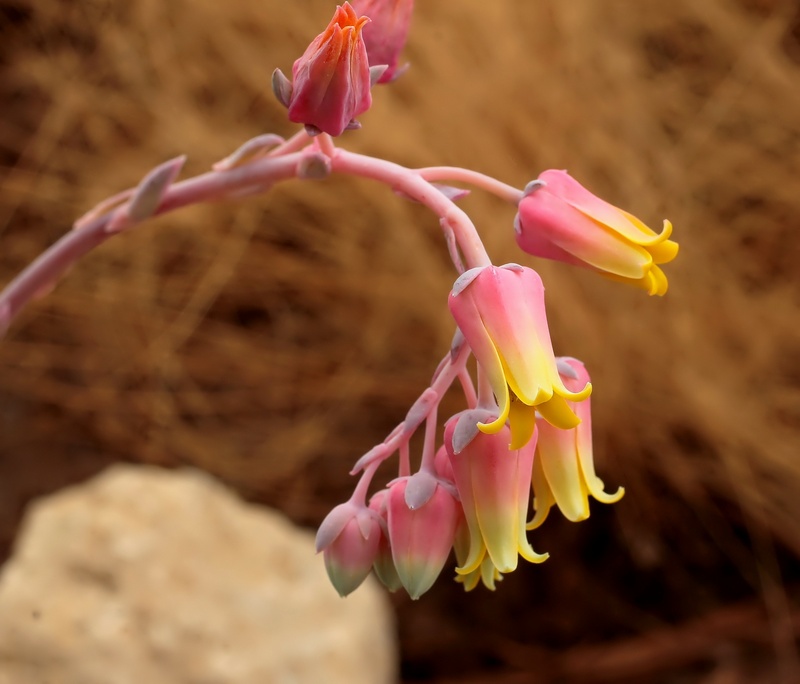
Echeveria ´Frank Reinelt´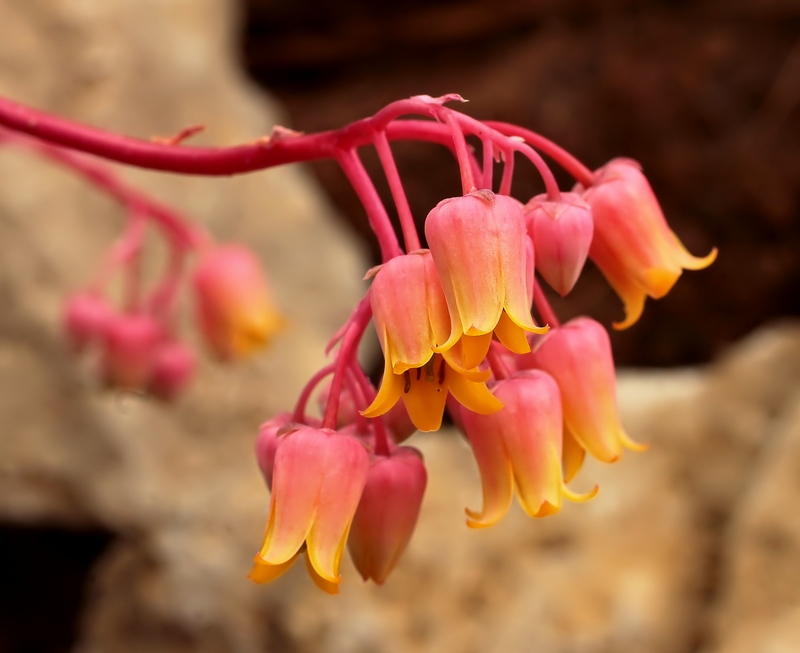
Echeveria ´Beatrice´
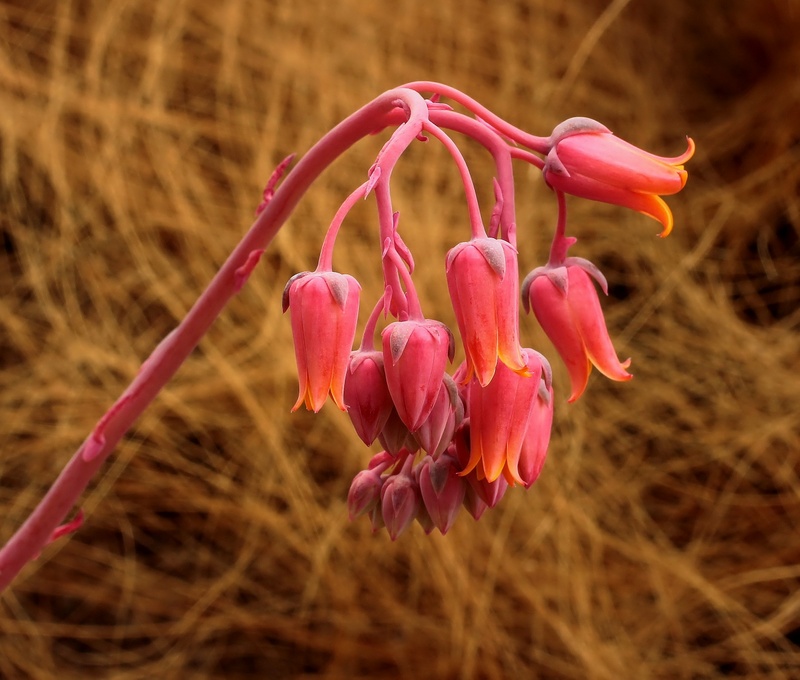
und X Pachyveria ´Elaine´
#25 Re: Präsentation » Crassulaceae in Magdeburg » 2015-04-09 15:56:01
Moin,
es ist dann die Frage, wie die Revision angegangen wird. Rein Morphologisch wird es wohl schwer, sich da durchzuwühlen und die Artenzahl dürfte verringert werden. Heutzutage bringen aber die phylogenetischen Untersuchungen derart diffuser Verwandtschaftskreise oft sehr überraschende Ergebnisse. Da müssen oft die morphologischen Merkmale anders gewertet werden und oftmals gibt es auch cryptische Arten. Aber, es muss sich nur jemand rantrauen. Vielleicht kann ich meinen Chef ja überreden.........;-).
Weitere Farbe von den Grusons:
X Pachyveria ´Muelleri´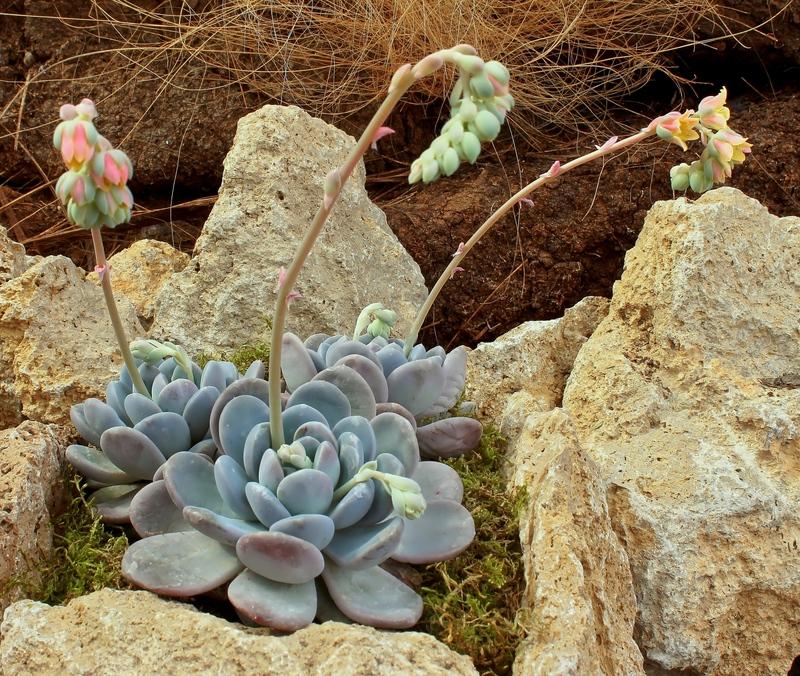
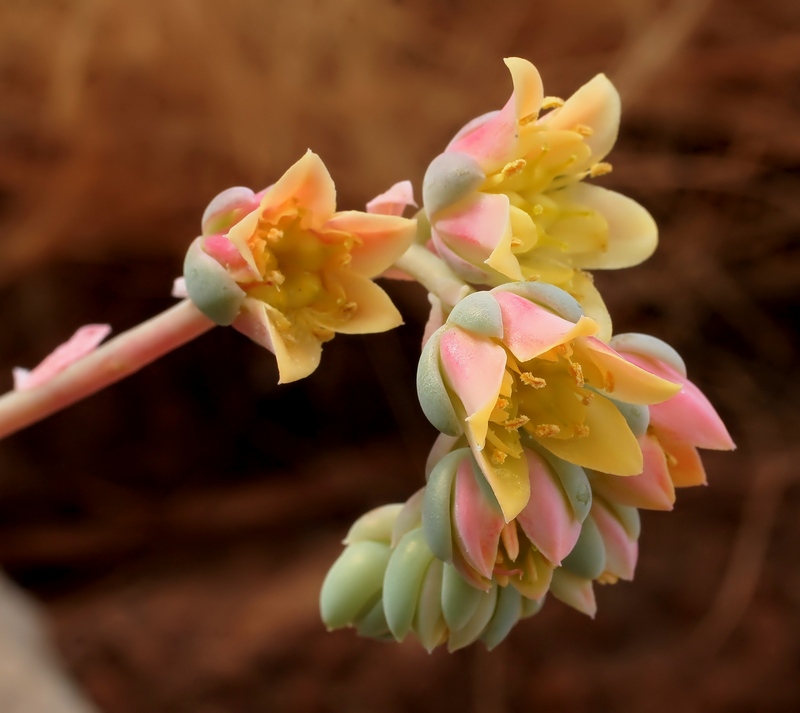
Sedum allantoides ´Goldii´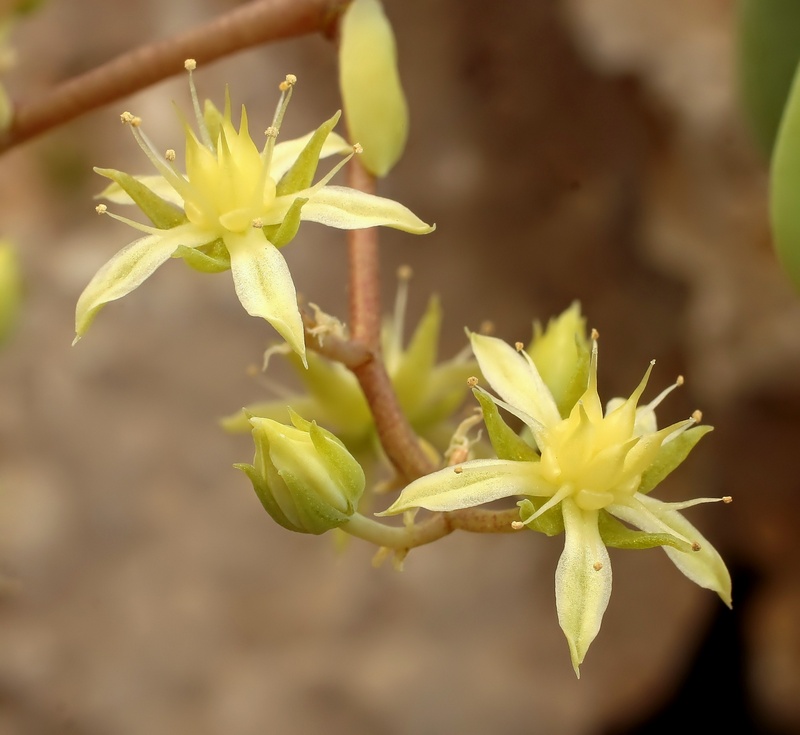
Echeveria agavoides ´Romeo´
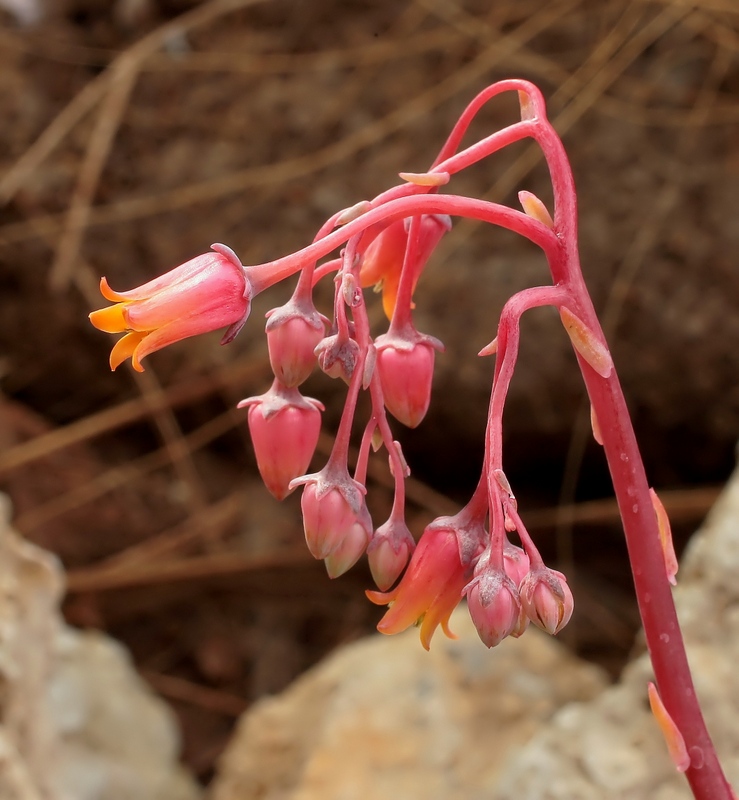
Echeveria colorata (?), ein kleinblütiger Typ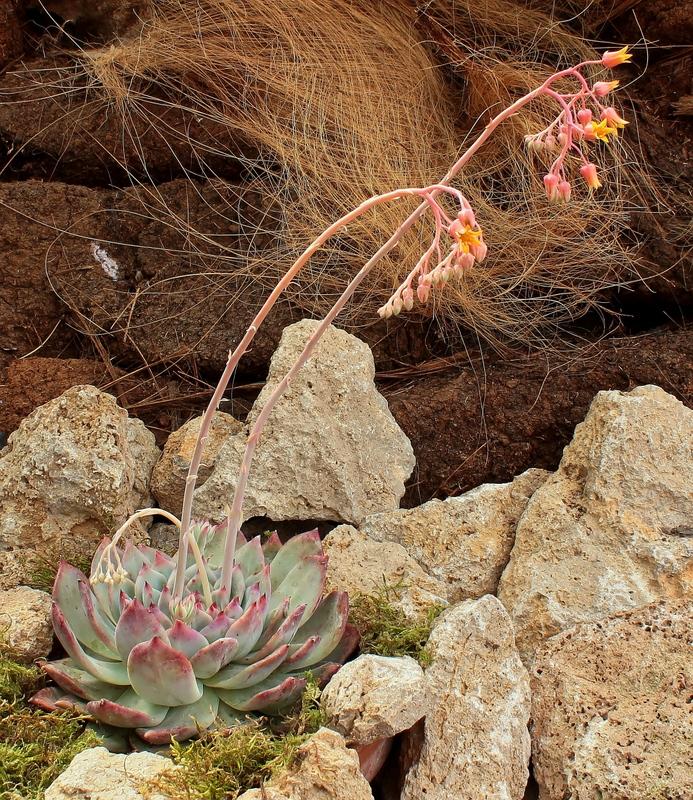
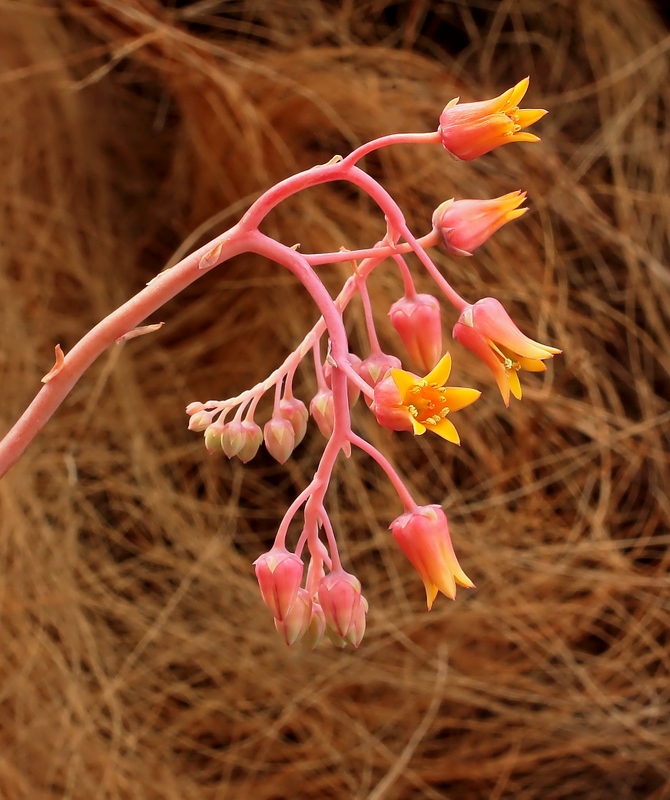
Echeveria derenbergii-Hybride